Philine Isabelle Barbera 75 cl.
 D.O.C. Barbera d'Alba, Piemonte, Italy.
D.O.C. Barbera d'Alba, Piemonte, Italy.![]() Barbera.
Barbera.![]() Red wine Bottle, 75 cl.
Red wine Bottle, 75 cl.
 EUR, Final price!
EUR, Final price! Receive it
Receive it  March Wednesday 12 - Thursday 13
March Wednesday 12 - Thursday 13 FREE SHIPPING!
FREE SHIPPING!| Producer | Philine Isabelle. |
| Variety |
|
| Country of origin |
 Italy. Italy.
|
| Region of origin |
 Piemonte. Piemonte.
|
| Appellation of origin |
 D.O.C. Barbera d'Alba. D.O.C. Barbera d'Alba.
|
| (UE)401/2010 Certification |
Denominazione di Origine Controllata (D.O.C.) D.O.C. Barbera d'Alba. |
| Production region | The production region of D.O.C. Barbera d'Alba is located in La provincia de Cuneo, en la región de Piemonte, Italia. |
| Weight | 1.500 gr. (1,5 Kg.). |
| Typology |
Red wine. D.O.C. Barbera d'Alba. |
| Variety |
|
| Vintage / Harvest |
Currently marketed by the producer.
|
| Format | Bottle. |
| Capacity | 75 cl. |
| Alcohol content | 14% Vol. |
| Ecological production | Yes, is an ecological product with full traceability in each of the production processes |
| Weight | 1.500 gr. (1,5 Kg.). |
| Product reference | WAN4548402 |
| Actual price | 29,95 € . This product is currently not available. |
| Storage position | Lateral position, horizontal bottle. |
| Storage temperature |
Store at a constant temperature between 10-17ºC. Humidity should be constant around 60-80%. |
| Recommendations | Keep preferably away from light. |
| Visual tasting note | Intense cherry color, Beautiful cape, Cherry shades. |
| Olfactory tasting note | Red fruits background, Nice toasts, Plum in liqueur, Intense red fruit. |
| Tasting note | Blackberries, Light entrance, Well rounded, Resistant aftertaste. |
| Recommended pairing | Fish Soups, Beef tenderloin, Processed meats, Seafood rice. |
| Consumption temperature | 16ºC. |
| Consumption | It is recommended to drink in moderation and demonstrate a responsible consumption of alcoholic beverages. |
| Please keep in mind |
The information provided and referred to the product features and details has been provided by the expert, manufacturer or producer or published on the official sites. In no case can it be considered as assessment made by our team, unless expressly stated otherwise. We suggest you to refer to the comments and reviews posted by our customers and users to expand and contrast this information. |
| Misreading |
Our team provides this information and details in ESPAÑOL language. If you browse in another language note that the information contained may have been translated from the original language through an automated real-time process that has not been supervised by our human team. In case of doubt, misunderstanding or misreading about the content of this information you should refer to the original version of this page or contact our customer service team. |
| Product image |
The product image or its label is only relevant for graphic purposes, so it may not match the identification of the vintage or other features and details of the product for sale. This product is provided in the conditions and format in which it is marketed at the current time. This product is not identified or supplied in a specific vintage. The product image and label may not match the vintage identification or other characteristics and details of the product for sale. |
| Legal Notice |
It is against the law to sell or supply alcohol to, or to obtain alcohol on behalf of a person under the age of 18 years. If you are not more than 18 years old, you must leave this website. |
Selection by «Message in a Bottle®»
Red Wine. Premium Edition MBS Reserva. Customizable label.
No customer reviews at this time. Be the first to post a review!
Product Selection by Philine Isabelle.
1 Products, The best selection by Philine Isabelle.
Philine Isabelle Barbera 75 cl.
Additional information.

|
«Philine Isabelle Barbera d'Alba» is produced by Philine Isabelle. «Philine Isabelle Barbera d'Alba» is monovarietal, made only with the grape variety Barbera, 100% Barbera. «Philine Isabelle Barbera d'Alba» is a product from Italy. The production region of «Philine Isabelle Barbera d'Alba» is Piemonte. It is certified with D.O.C. Barbera d'Alba. The production region of D.O.C. Barbera d'Alba is located in La provincia de Cuneo, en la región de Piemonte, Italia. The weight of «Philine Isabelle Barbera d'Alba» is 1.500 grams (1,5 Kg.). |
Appellation of origin:
D.O.C. Barbera d'Alba.
Philine Isabelle Barbera 75 cl.
 Español [ ES ]
Español [ ES ]La DOC.
La Barbera d'Alba nació en el Langhe, "lenguajes" reales de las tierras que se extienden en un animado juego de perfil, modulados por el cambio de estaciones. La uva Barbera representa la fortuna del área de Langa y Roero, pudiendo producir excelentes vinos para el envejecimiento y al mismo tiempo para dar emoción a los vinos más jóvenes. Se cultiva principalmente en las laderas montañosas expuestas al sudoeste, con un sistema de entrenamiento de espaldera con poda guyot. El Barbera d'Alba se obtiene de la vinificación de uvas de la vid Barbera, aunque en algunos casos un pequeño conjunto con el Nebbiolo permite amortiguar la característica acidez de la uva. Barbera, hace tiempo, era considerado como un vino "rústico", pero con el tiempo creció su fama, ya que ha demostrado que es capaz de ofrecer, a través de procesos de elaboración apropiados, dos vinos de la longevidad media y buena estructuras, que resisten el paso del tiempo e incluso después de muchos años confirman las características más originales de una tierra y una vid de prestigio particular.
El territorio.
El área geográfica adecuada para la producción de vino Barbera d'Alba DOC se extiende sobre las colinas de Langhe, en un territorio adecuadamente ventilado, brillante y favorable para el desempeño de todas las funciones vegetativas-productivas de los viñedos. El Área de Producción de Vino Barbera d'Alba DOC se encuentra en: Provincia de Cuneo e incluye el territorio de los municipios de Alba, Albaretto della Torre, Barbaresco, Barolo, Borgomale, Camo, Canale, Castagnito, Castellinaldo, Castiglione Falletto, Castiglione Tinella, Castino, Corneliano d'Alba, Cossano Belbo, Diano d'Alba , Govone, Grinzane Cavour, Guarene, Magliano Alfieri, Mango, Monforte d'Alba, Montelupo Albese, Monticello d'Alba, Neive, Neviglie, Novello, Perletto, Piobesi d'Alba, Priocca, Rocchetta Belbo, Roddi, Roddino, Rodello, S. Vittoria d'Alba, S. Stefano Belbo, Serralunga d'Alba, Sinio, Treiso, Trezzo Tinella, Verduno, Vezza d'Alba y, en parte, el territorio de los municipios de Baldissero d'Alba, Bra, Cortemilia, Cherasco , La Morra, Monchiero, Montà d'Alba, Montaldo Roero, Monteu Roero, Narzole, Pocapaglia, S. Stefano Roero y Sommariva Perno.
Vinificación.
En las fases de vinificación, solo las prácticas enológicas justas y constantes en la zona son adecuadas para dar a los vinos sus características de calidad peculiares. Las prácticas de vinificación del vino Barbera d'Alba DOC incluyen, entre otras cosas, que el rendimiento máximo de uvas en el vino Barbera d'Alba DOC no debe exceder el 70%; Si se superan estos parámetros dentro del límite del 5%, el excedente no puede tener derecho a DOC. Más allá de estos límites, caduca el derecho a DOC para todo el producto. Bajo ciertas condiciones, el vino Barbera d'Alba DOC se puede reclasificar en la denominación DOC Langhe sin especificar la variedad de uva. El vino Barbera d'Alba Superiore DOC debe envejecer durante al menos 12 meses, de los cuales al menos 4 en barriles de madera.
En la designación de los vinos Barbera d'Alba DOC, se puede mencionar el término " Vigna " siempre que sea seguido por el topónimo relativo y que se respeten ciertas prácticas de vinificación. En las etiquetas de cada tipo de vino DOC Barbera d'Alba es obligatorio informar el año de producción de la uva.
Red wine D.O.C. Barbera d'Alba
Product Selection Red wine D.O.C. Barbera d'Alba.
Philine Isabelle Barbera 75 cl.
Variety:
Barbera.
Philine Isabelle Barbera 75 cl.
 Español [ ES ]
Español [ ES ]Origen.
La variedad barbera tiene su origen las colinas de Monferratto, en el Piamonte central, donde ya era conocida en el siglo XIII. En la Catedral de Casale Monferrato, se conservan documentos de esa época que detallan el contrato del arriendo de las viñas plantadas con la uva "de bonis vitibus barbexinis", también conocida como barbera. Ampelográficamente se especula su origen en la región de Oltrepò Pavese, en Lombardía. En los siglos XIX y XX, las olas de inmigrantes italianos llevaron esta vid a América, asentándose en California y Argentina. Fuera de Italia, se cultivan en California, Brasil, Argentina y Australia, entre otros países. Análisis genéticos relacionan a la uva barbera con la uva española monastrell, conocida en Francia como mourvedre. En 1985, la región de Piamonte fue golpeada por un escándalo que involucraba a los productores de barbera, a los que se acusaba de haber añadido metanol a sus vinos, produciendo la muerte de varias decenas de personas y provocando daños en la salud de otras muchas. La mala prensa provocó que esta uva fuera eclipsada y que la montepulciano la sustituyera como la segunda uva tinta más ampliamente plantada en Italia durante la década de 1990.
Características.
La variedad Barbera es una cepa de mucho vigor, con capacidad para dar una producción muy alta cuando se cultiva con las adecuadas condiciones de poda y otros métodos. Hay que medir mucho esos rendimientos, ya que el exceso de uva provoca una disminución de la calidad afrutada de la uva y acentua la acidez y la intensidad natural de esta variedad. En Piamonte, la vid es valorada por sus rendimientos y su habilidad a madurar dos semanas antes que la nebbiolo, incluso en viñedos con una exposición menor que la ideal. Las uvas Barbera se desarrollan con facilidad en el clima cálido de de Italia, y en particular, en el de la región de Piamonte, al noroeste de la península itálica. Los hollejos de la barbera precipitan los antocianos pocos días después del inicio de la fermentación. Es una variedad de uva tinta cuyo contenido tánico es bajo. Es altamente resistente a los hongos y es capaz de producir buenas cosechas en diferentes tipos de tierra.
Zonas de cultivo.
Las principales provincias donde se utilizan para elaborar vino son Asti, Alessandria, Cuneo, Salerno, Benevento, Bologna y Modena, cuyas denominaciones de origen son en particular DOC Barbera d’Alba, DOCG Barbera d’Asti, DOC Barbera del Monferrato, DOC Piamonte Barbera, DOC Colli Tortonesi, DOC Canavesi Barbera, DOC Colline Novaresi Barbera, DOC Gabiano, DOC Rubino di Cantavenna. Fuera del Piamonte en la DOC Oltrepò Pavese Barbera en Lombardía, DOC Colli Bolognesi en la Emilia Romaña, DOC Castel San Lorenzo Barbera en la Campania. Fuera de Europa se la encuentra en Australia donde se adaptó muy bien al suelo, también hay uva barbera en California y en Sudamérica en Argentina, Brasil y Uruguay donde llegó de la mano de los inmigrantes italianos. En Argentina, principalmente en Mendoza y en San Juan, aunque se da excelente en Salta también a pesar de la escasa cantidad cultivada. En Mendoza representa el 0,47% del total de las variedades tintas, que, aunque parezca poco, es apenas seguida por Cabernet Franc con un 0,79% en la participación de uvas tintas para vinificar.
Vinos.
Cuando son jóvenes, los vinos ofrecen un aroma muy intenso, fresco y a mora. En sus versiones más ligeras muestra notas de cerezas, frambuesas, arándanos y, en los vinos tintos hechos de uvas más maduras, notas de cereza y mora. Por lo general, organolépticamente, los vinos de barbera de gran calidad tienen un color rojo rubí, intenso, cubierto. Su nariz es fundamentalmente floral con toques de pétalos de rosa, violetas, salvia, apareciendo aromas frutales a cerezas, ciruelas, grosellas, frambuesas. También aparecen aromas especiados a pimienta, clavo, canela. Su boca es equilibrada, con buena textura, con acidez marcada pero no excesiva, cuerpo medio, largo, grato que invita a seguir degustando.
Red wine Barbera
Product Selection Red wine Barbera.
Philine Isabelle Barbera 75 cl.

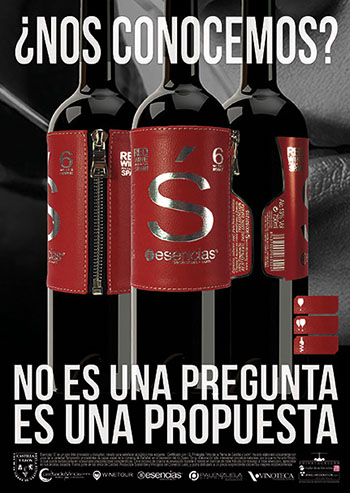
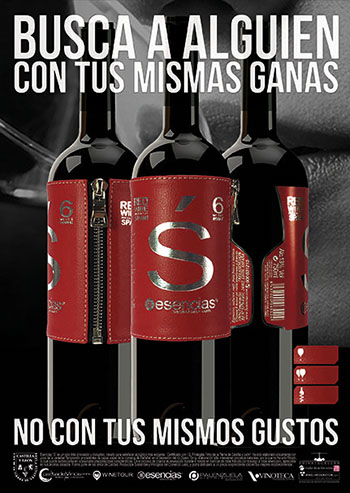
Data sheet.
Philine Isabelle Barbera 75 cl.
Red wine. Philine Isabelle. D.O.C. Barbera d'Alba. Piemonte. Italy. Barbera. Bottle. 75 cl..
| Variety | |
| Country of origin |  Italy. Italy. |
| Region of origin |  Piemonte. Piemonte. |
| Appellation of origin |  D.O.C. Barbera d'Alba. D.O.C. Barbera d'Alba. |
| Vintage / Harvest | Currently marketed by the producer. |
| Format | Bottle. |
| Capacity | 75 cl. |
| Alcohol content | 14% Vol. |
| Ecological production | Yes, is an ecological product with full traceability in each of the production processes |
| Visual tasting note | Intense cherry color, Beautiful cape, Cherry shades. |
| Olfactory tasting note | Red fruits background, Nice toasts, Plum in liqueur, Intense red fruit. |
| Tasting note | Blackberries, Light entrance, Well rounded, Resistant aftertaste. |
| Recommended pairing | Fish Soups, Beef tenderloin, Processed meats, Seafood rice. |
| Consumption temperature | 16ºC. |
| Typology | Red wine. D.O.C. Barbera d'Alba. |
| Producer | Philine Isabelle. |
| Weight | 1.500 gr. (1,5 Kg.). |
| Product reference | WAN4548402 |
| Actual price | 29,95 € . This product is currently not available. |
| Please keep in mind | The information provided and referred to the product features and details has been provided by the expert, manufacturer or producer or published on the official sites. In no case can it be considered as assessment made by our team, unless expressly stated otherwise. We suggest you to refer to the comments and reviews posted by our customers and users to expand and contrast this information. |
| Misreading | Our team provides this information and details in ESPAÑOL language. If you browse in another language note that the information contained may have been translated from the original language through an automated real-time process that has not been supervised by our human team. In case of doubt, misunderstanding or misreading about the content of this information you should refer to the original version of this page or contact our customer service team. |
| Product image | The product image or its label is only relevant for graphic purposes, so it may not match the identification of the vintage or other features and details of the product for sale. This product is provided in the conditions and format in which it is marketed at the current time. This product is not identified or supplied in a specific vintage. The product image and label may not match the vintage identification or other characteristics and details of the product for sale. |
| Country of origin | Spain. This product is shipped from Spain. |
| (UE)401/2010 Certification | Denominazione di Origine Controllata (D.O.C.) D.O.C. Barbera d'Alba. |
| Production region | The production region of D.O.C. Barbera d'Alba is located in La provincia de Cuneo, en la región de Piemonte, Italia. |
| Storage position | Lateral position, horizontal bottle. |
| Storage temperature | Store at a constant temperature between 10-17ºC. Humidity should be constant around 60-80%. |
| Recommendations | Keep preferably away from light. |
| Accessories | This product is provided in the conditions and format in which it is marketed at the current time. In cases where the product includes an additional packaging, box and/or case, These accessories will be included in the shipment as long as they comply with the dimensions of the special packaging adapted and approved for the transport of beverages. In general, the images of the products that we publish on our website are only relevant for graphic purposes. The images do not show other accessories such as additional packaging (box, case, etc.) or promotional elements that may occasionally be included by the manufacturer along with the product. If you wish, we can inform you about the additional packaging, elements and accessories included with the product at the current time. |
| Legal Notice | It is against the law to sell or supply alcohol to, or to obtain alcohol on behalf of a person under the age of 18 years. If you are not more than 18 years old, you must leave this website. |
| Consumption | It is recommended to drink in moderation and demonstrate a responsible consumption of alcoholic beverages. |
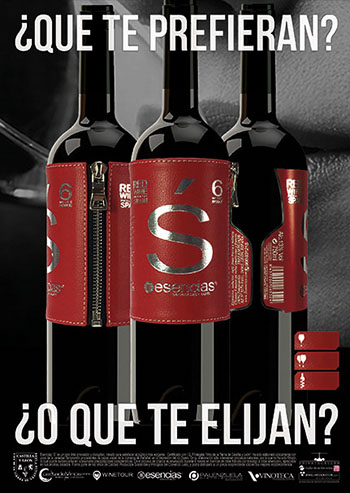
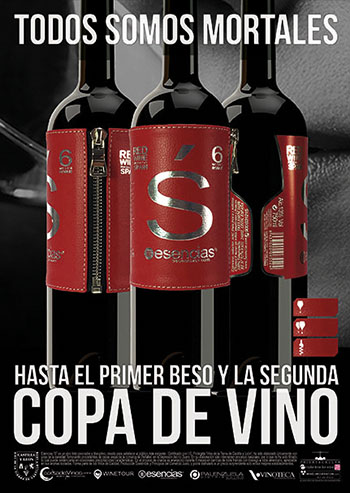
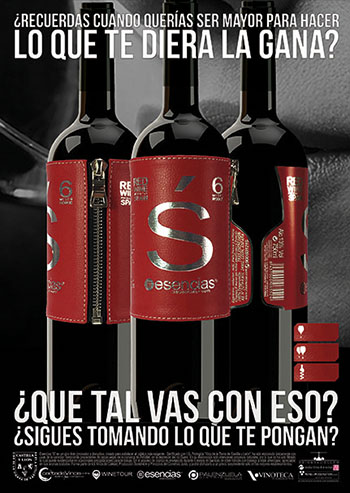
 France
France Argentina
Argentina United States
United States Australia
Australia Portugal
Portugal Chile
Chile New Zealand
New Zealand South Africa
South Africa



 Germany
Germany Austria
Austria



 Tokaj-Hegyalja
Tokaj-Hegyalja









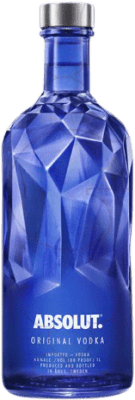






















 Language English
Language English





































